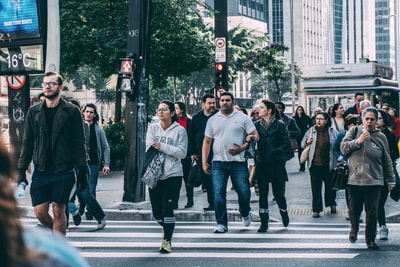How do you relate to others? When you look at situations the blind spot is yourself. As you are the source of attention, looking outward, it is not easy to “turn back the camera” and see yourself as part of the situation. Here lies an explanation for self-deception. You may conclude: the others are the problem, not you.
Self-deception is the most common damaging problem in organizations, states the Arbinger Institute in their book Leadership and Self-Deception – Getting out of the box. This refers to the dysfunctional ego-drivenness we discussed before: the ego prefers to see the others as the problem. The ego needs to justify that you are worthy of safety, sufficiency, belonging, respect, and meaning. It holds those five fears: of death and hurt, scarcity, abandonment, humiliation, and absurdity.
How do you see others?
The philosopher Martin Buber said that there are two different ways of being in the world: the I-it or I-thou way.
I-it means that I am a person – but I see other people as objects or means to my ends. They don’t have the same status as I do – we are not equal. I feel more entitled as I am the center of my world. My relationship with others is transactional. We exchange favors, and I make sure to get more than I give. I am self-centered and not great at empathy. It’s not easy to see it your way. I identify with my ego and its needs. I see myself as the center.
I-thou means that I see you as a person, too. You are equal and I acknowledge your humanity, with all the associated fears and needs. We are both in the world, with the same rights and duties. My relationship with others can be transformational. We exchange who we are, and we give what we both would like to get. I am other-focused and use both self-compassion and empathy and compassion. I can see it your way. I am more than my ego and can transcend its fears. I see myself as part of the whole.
Being in the box
When you treat others as a means to an end, or less important than yourself or as the furniture in a situation – you are self-focused and treat them as objects. The Arbinger Institute describes this as “being in the box”. You can liken their “box” to the armor of your Ego.
When you are in the box your view of reality is distorted. You tend to justify your own actions and exaggerate your own good intentions and characteristics – and tend to inflate the faults, bad intentions, and behaviors of others. You judge them and your posture and nonverbal communication radiate blame, superiority, entitlement, indignation, maybe even victimhood. “Look at what you did to me…!”
This evokes the same Ego responses from others, who will defend themselves against these (maybe only nonverbal) allegations. They feel how you regard them.
Stereotyping is also seeing others as objects. So is demonizing someone – when you label someone as the bad guy you don’t see the whole person.
If you are honest with yourself, when did you treat others as objects? When did you treat them as equal people?
This is book post #46 – ME
Here‘s the earlier post
Here‘s the next post
If you’re confused – please start with post #1 or check the Positive Power overview and read the Positive Agent Manifesto.
Leaders, employees, consultants, citizens – everyone can make a positive difference from any position, without needing permission or resources from others. This blog will help you see positive possibilities and (re)claim your positive agency. Unstuck yourself and engage others via your interaction and actions. Transform into a positive organization where people and performance thrive.
I’m blogging my next book: “Positive Power at Work – How to make a positive difference from any position.” Your feedback is appreciated!

One Response
Super nice